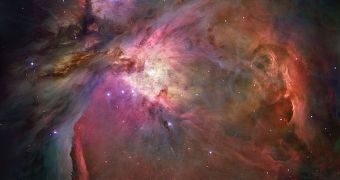According to a new set of data supplied by scientists at the Yale University, supermassive black holes at the center of galaxies are not responsible for the shutting down of star formation processes, because these processes start way before the black hole reaches its maximum size and begins to influence everything around it. Conventional wisdom had it that the highly-energetic active galactic nuclei (AGN) were responsible for disrupting the formation of new stars in “nurseries,” by feeding on the gas the celestial bodies needed in order to grow.
“For the first time, we’ve measured a real delay between the end of star formation and the onset of a luminous AGN. Either way, this result shows that our previous understanding of how the shutting-down process works wasn’t as simple as we thought,” Yale’s astronomy department postdoctoral associate Kevin Schawinski, who is also the lead author of the new study to be published in the February 10th issue of the Astrophysical Journal Letters, says.
“This high-luminosity phase, when the AGN are at their biggest and brightest and most powerful, is not the phase responsible for the shutdown of star formation. It’s possible that an earlier, low-luminosity phase is responsible,” he adds.
“The key result is the finding that there is a lack of AGN in galaxies that are currently forming stars. That tells us the AGN doesn’t turn on until long after the stars stop forming,” the director of the Yale Center for Astronomy and Astrophysics, Meg Urry, who has also been the leader of the research team, argues.
The experts say that the time that passed between the moment when stars stopped forming and that when the black hole at the center of the galaxy became supermassive and influential is well in excess of millions of years, perhaps even hundreds of millions. They maintain that the real “culprit” has not yet been identified, but that at least now they know not to assume anymore things about the intricate processes that go on at the cores of galaxies.

 14 DAY TRIAL //
14 DAY TRIAL //